#warehouse automation robots
Explore tagged Tumblr posts
Text
Manual Testing vs Automation Testing: A Full Comparison
Manual Testing vs Automation Testing is a debate every QA team faces. Both approaches have unique advantages, and the choice depends on project needs, timelines, and resources.
Manual testing involves human testers executing test cases without the use of scripts. It’s ideal for exploratory, usability, and ad-hoc testing, where human intuition and observation play a major role. Manual testing is also more adaptable during frequent UI changes and is cost-effective for short-term projects.
On the other hand, automation testing uses tools and scripts to run tests automatically. It shines in regression, performance, and load QA testing services, where speed, repeatability, and accuracy are crucial. While initial setup can be time-consuming and expensive, automation delivers long-term ROI for large-scale or continuous testing.
However, automation cannot completely replace the human touch required for complex test scenarios, subjective validation, or UI/UX assessments.
In summary, manual testing provides flexibility and context-driven insight, while automation offers efficiency and scalability. A well-balanced QA strategy leverages both to deliver high-quality software faster and more reliably.
#qa testing services#qa testing company#qa testing software#software testing strategies#warehouse automation robots#automation tools#performance testing tools#test management tool
0 notes
Text
What are the latest warehouse automation technologies?
Gone are the days of manual labour and static, inefficient operations. Today, we stand at the forefront of a revolution driven by the latest warehouse automation technologies. These innovations reshape how businesses handle inventory, fulfil orders, and optimize supply chains.
From autonomous robots and artificial intelligence to the Internet of Things (IoT) and advanced data analytics, we'll explore how these technologies enhance efficiency, reduce costs, and ensure seamless operations in modern warehouses.
1-Robotic Process Automation (RPA): RPA involves using software robots to automate repetitive tasks like data entry, order processing, and inventory tracking. The robots interact with various systems and applications to streamline workflows.
2-Autonomous Mobile Robots (AMRs): Robotic vehicles called AMRs navigate and operate in warehouses without fixed infrastructure, such as conveyor belts or tracks. They perform tasks like picking, packing, and transporting goods.
3-Automated Guided Vehicles (AGVs): AGVs are similar to AMRs but typically follow fixed paths or routes guided by physical markers or magnetic tape. They are commonly used for material transport in warehouses and distribution centres.
4-Goods-to-Person Systems: This approach involves bringing the items to the workers rather than having workers travel throughout the warehouse to pick items. Automated systems retrieve and deliver goods to a workstation, reducing walking time and improving efficiency.
5-Automated Storage and Retrieval Systems (AS/RS): AS/RS systems use robotics to store and retrieve items from racks or shelves automatically. These systems can significantly increase storage density and optimize space utilization.
6-Collaborative Robots (Cobots): Cobots are designed to work alongside human workers. They can assist with tasks like picking, packing and sorting, enhancing efficiency and safety.
7-Warehouse Management Systems (WMS): While not a physical automation technology, modern WMS software uses advanced algorithms and AI to optimize inventory management, order fulfilment, and warehouse processes.
8-Vision Systems and Machine Learning: Computer vision technology combined with machine learning can be utilized for tasks such as object recognition, inventory movement tracking, and quality control.
9-IoT and Sensor Networks: Internet of Things (IoT) devices and sensors collect real-time data on inventory levels, environmental conditions, equipment health, and more, enabling better decision-making and predictive maintenance.
10-Voice and Wearable Technologies: Wearable devices and voice-guided picking systems can provide workers with real-time information and instructions, improving accuracy and efficiency.11-Automated Packaging Solutions: These systems automate the packaging process by selecting the appropriate box size, sealing packages, and applying labels, reducing manual labour and ensuring consistent packaging quality.
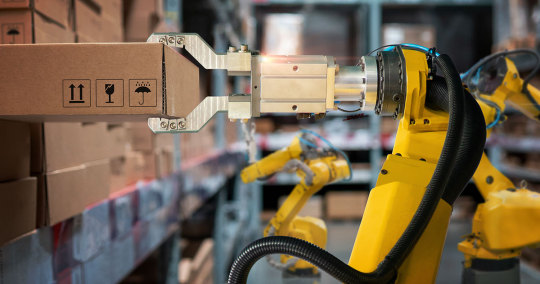
1 note
·
View note
Text
Global Shutter USB Cameras: A Game-Changer for Robotic Arm Accuracy in Warehouses

In the ever-evolving landscape of warehouse automation, precision and efficiency are paramount. Enter the global shutter USB camera, a technology that is revolutionizing the capabilities of robotic arms. Unlike traditional cameras, global shutter USB cameras capture images without distortion, making them ideal for high-speed operations where accuracy is critical. As warehouses strive to enhance productivity and streamline operations, understanding the role of these advanced cameras is essential.
The Benefits of Global Shutter USB Cameras for Robotic Arms
Enhanced Image Quality for Accurate Object Recognition
Global shutter USB cameras provide unparalleled image quality, crucial for robotic arms tasked with object recognition and manipulation. Traditional rolling shutter cameras can cause motion blur, leading to misidentification of objects. In contrast, global shutter cameras capture each frame simultaneously, ensuring clarity and detail. This capability allows robotic arms to accurately identify, pick, and place items, reducing errors and improving overall workflow efficiency.
Real-Time Processing and Response
One of the standout features of global shutter USB cameras is their ability to facilitate real-time image processing. With their rapid capture rates, these cameras enable robotic arms to process visual information almost instantaneously. This capability is vital in fast-paced warehouse environments, where split-second decisions can impact productivity. For instance, if a robotic arm detects an obstacle or a misplaced item, it can quickly adjust its actions, minimizing downtime and maintaining a seamless operation.
Improved depth perception for complex tasks
Depth perception is essential for robotic arms performing intricate tasks, such as stacking boxes or assembling products. Global shutter USB cameras offer superior depth information due to their precise image capture capabilities. By providing clear, undistorted images, these cameras enable robotic systems to gauge distances accurately, ensuring that arms can execute complex maneuvers safely and efficiently. This advancement not only enhances productivity but also reduces the risk of accidents in busy warehouse settings.
Global Shutter USB Cameras and Increased Safety Measures
Minimizing collision risks
Safety is a top priority in any warehouse, especially when robotic arms are in operation. The use of global shutter USB cameras contributes significantly to minimizing collision risks. With their ability to capture high-quality images rapidly, these cameras can detect potential hazards in real time. Robotic arms equipped with global shutter cameras can react swiftly to obstacles, preventing accidents and ensuring a safer working environment for all.
Facilitating Advanced Safety Protocols
Integrating global shutter USB cameras into robotic systems also enables the implementation of advanced safety protocols. These cameras can work alongside other sensors, such as LIDAR and infrared, to create a comprehensive safety network. This synergy allows for more robust monitoring and control of robotic movements, ensuring compliance with safety standards and protecting warehouse personnel from accidents.
Global Shutter USB Cameras: A Future of Precision in Robotics
Versatility in Application
Global shutter USB cameras are not only limited to robotic arms; their versatility extends across various warehouse applications. From quality control inspections to inventory management, these cameras enhance the functionality of automated systems. By providing precise visual data, global shutter cameras support various operational needs, making them indispensable tools in modern warehouses.
A Step Towards Full Automation
As warehouses increasingly adopt automation technologies, global shutter USB cameras play a crucial role in the journey toward fully automated operations. With their ability to deliver real-time, high-quality images, these cameras enable robotic systems to work autonomously with greater accuracy. This capability sets the stage for a future where warehouses can operate with minimal human intervention, significantly increasing efficiency and productivity.
Are you ready to elevate your warehouse operations with cutting-edge technology? Explore how global shutter USB cameras can transform your robotic systems for enhanced accuracy and efficiency. Contact us today for more information on integrating these game-changing cameras into your automation solutions, or subscribe to our newsletter for the latest insights and updates in warehouse robotics technology!
0 notes
Text
Automation-x
Numerous sectors rely on Automation-X, Inc. for excellent products and solutions when it comes to industrial automation. Among the various services we provide are off-grid power solutions, instrumentation outfitting, and designs for RTU and PLC panels.
#Special Machinery Industry India#Automation-x India#Warehouse Automation India#Factory Automation Pune#Industrial Automation Control India#Process Automation Robotics India#Industrial Automation Siemens#Industrial Automation Industry Pune#Robotics
0 notes
Link
OSARO employs a diverse & talented team of experts in the specialized field of machine and deep learning (Software Development).
#fulfillment #robotics #logistics #ecommerce #warehouse #kitting #etail #pickandplace #automation @OsaroAI
0 notes
Text
Navigating the Future: Advancements in Warehouse Robotics Technology
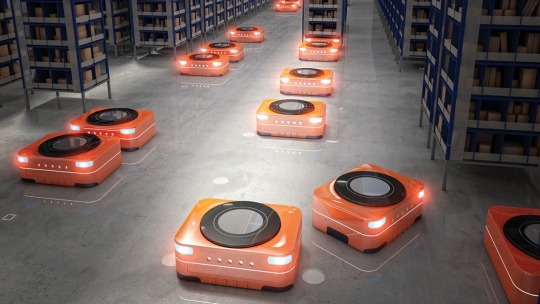
As we look to the future of logistics and supply chain management, one technology stands out as a driving force behind innovation and efficiency: warehouse robotics. Rapid advancements in robotics technology are reshaping the way warehouses operate, offering unprecedented levels of automation, precision, and scalability.
Exploring the Latest Advancements:
Enhanced Mobility and Flexibility: The latest advancements in Warehouse Robotics technology are focused on enhancing mobility and flexibility. Robots are becoming more agile and adaptable, capable of navigating complex warehouse environments with ease. This increased mobility allows for greater flexibility in warehouse layout and optimization of space.
Integration of Artificial Intelligence: Artificial intelligence (AI) is playing a crucial role in the evolution of warehouse robotics. AI-powered robots can analyze vast amounts of data in real-time, allowing them to make intelligent decisions and adapt to changing circumstances on the fly. This level of autonomy and decision-making capability is revolutionizing warehouse operations.
Embracing Collaborative Robotics:
Collaborative Robots (Cobots): Collaborative robots, or cobots, are another exciting development in warehouse robotics technology. Unlike traditional industrial robots, cobots are designed to work alongside human workers, enhancing efficiency and safety in the warehouse environment. These robots can perform tasks that require dexterity and precision, while humans focus on more complex operations.
Human-Robot Collaboration: The integration of cobots into warehouse workflows enables seamless human-robot collaboration. By working together, humans and robots can leverage their respective strengths to optimize productivity and achieve higher levels of efficiency. This collaborative approach to warehouse robotics ensures a smooth transition towards fully automated warehouse operations.
Get More Insights On This Topic: Warehouse Robotics
#Warehouse Robotics#Automation#Robotics Technology#Supply Chain Efficiency#Logistics Automation#Robotic Automation#Warehouse Management#Industrial Robotics
0 notes
Text
#warehouseautomation#wms#automation#warehousemanagement#inventorymanagment#erpsoftware#warehouse#ai#software#cloud#inventorymanagementsoftware#erpsystem#stockmanagement#supplychain#management#industry#warehousing#business#robotics#sales#team#manufacturing#digital#multichannel#automationengineering#demo#help#technology#robot#robots
1 note
·
View note
Text
Sức mạnh tự động hóa trong quản lý kho hàng
SỨC MẠNH CỦA TỰ ĐỘNG HÓA TRONG QUẢN LÝ KHO HÀNG
Để vượt qua các thách thức của tự động hóa, các doanh nghiệp cần một đối tác có kinh nghiệm, giúp thiết kế và biến đổi hoạt động logistics. Thông qua phần mềm, phần cứng và tư vấn phù hợp, các công ty có thể duy trì hiệu quả và độ tin cậy trong chuỗi cung ứng của họ.
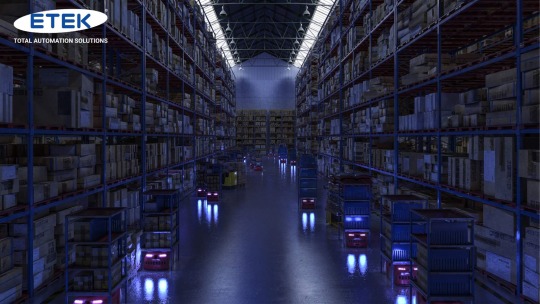
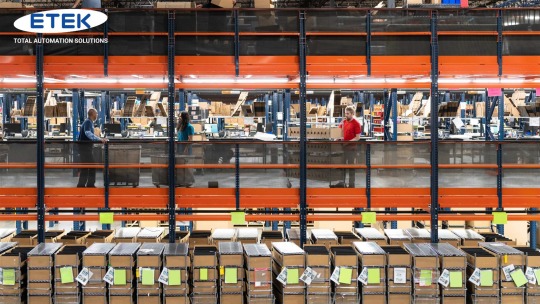
0 notes
Text
Leveraging AI in Robotic Test Automation for Smarter Testing Processes
Artificial Intelligence (AI) is revolutionizing robotic test automation by enabling smarter, more efficient testing processes. Here’s how AI enhances test automation:
Intelligent Test Case Generation
AI algorithms analyze application behaviour and user interactions to identify critical test scenarios. This eliminates guesswork and ensures comprehensive coverage with minimal manual intervention.
Self-Healing Automation Scripts
AI-powered automation can detect and adapt to changes in application UI or workflows, ensuring scripts remain functional even after updates. This reduces maintenance efforts and downtime.
Predictive Analytics
AI tools analyze historical data to predict potential failure points and prioritize high-risk areas for testing. This targeted approach optimizes resource allocation and improves efficiency.
Enhanced Accuracy and Efficiency
By automating repetitive and complex tasks with precision, AI eliminates human errors, accelerates execution, and improves the reliability of test outcomes.
Visual and Cognitive Testing
AI enables visual recognition and natural language processing for testing complex UI elements and voice/text-based interfaces, making it ideal for modern applications.
Continuous Learning
AI systems continuously learn from test data, improving decision-making and test case relevance over time.
Integrating AI into robotic test automation empowers QA teams to deliver smarter, faster, and more reliable testing, ensuring high-quality software in dynamic development environments.
#robotic test automation solution#robotic automation solution#robot framework web automation#mainframe automation using robot framework#robotics process automation testing#web automation using robot framework#warehouse automation robots
0 notes
Text
[ The Robot Takeover Is Starting With Amazon ]
#wauln#league of legends#digit#amazon#automation#agility robotics#machine learning#warehouse#AI#job loss#augment#cyberpunk
1 note
·
View note
Text
Embracing the Era of Automated Warehouse Robots
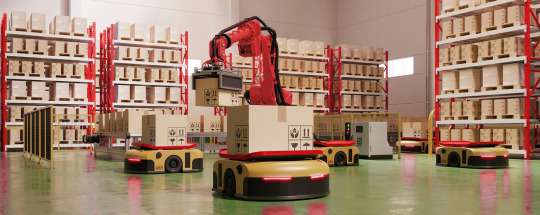
With a focus on warehouse automation and the implementation of cutting-edge mobile robotic solutions, Hitachi is revolutionizing the manufacturing landscape.
Central to this transformation is robotic palletizing, where advanced robots take charge of precise and efficient stacking of goods. This automation streamlines warehouse operations, optimizing productivity and minimizing errors.
Hitachi's expertise extends to logistics automation, incorporating robotic sorting and warehouse picking technologies. These robotic systems facilitate seamless order fulfillment, ensuring faster and error-free processes. By harnessing intelligent warehouse technology, Hitachi enhances overall inventory management, enabling accurate and efficient warehouse sorting. To further elevate efficiency, Hitachi has developed automated warehouse robots tailored for logistics tasks. These robots navigate warehouse spaces, facilitating smooth transportation and handling of goods.
Hitachi's dedication to excellence encompasses robotic inventory systems, harnessing the power of robotics and AI-driven technologies. These systems enable real-time tracking and monitoring of inventory levels, resulting in precise stock management and reduced discrepancies.
Hitachi's logistics and warehouse automation solutions encompass robotic depalletizing and palletizing solutions, warehouse picking, robotic warehouse sortation systems, automated guided vehicles and autonomous mobile robots.
Through these cutting-edge advancements, Hitachi is driving the future of warehousing, propelling it toward efficient, accurate, and technologically advanced operations.
Learn more on how scalable mobile robotic solutions manage the picking, sorting, and palletizing, making warehouse operations more efficient, cost-effective and safe:
Discover how Hitachi is enabling data-driven manufacturing automation to achieve sustainability and profitability:
#warehouse automation#warehouse robotics#logistics automation market#warehouse robots#warehouse technology#digital innovation#robotics#sustainability
0 notes
Text
In the modern era decades, most businesses believe in artificial intelligence things. Thereby, Slique specialists provide Commercial Cleaning Robots USA, and this helps us with automation. We can use this in factories, restaurants, and many industries, where our experts deliver you online consultation with multiple robotic options and much more.

#robotic service#industrial robotics company#warehouse and logistics#across the spiderverse#robotics and automation#USA
0 notes
Text
becoming an engineer has imbued me with several obnoxious traits but one of the worst is a lessening of the patience i have for people who suggest "obvious" solutions to massive long-standing engineering problems, in a way that suggests that they caught something that the army of engineers who spent decades of man-hours trying to solve the same issue just... missed. the direct impetus behind this post is all the people on the Biblically Accurate Highways post commenting stuff like "that could have been a roundabout" under the pic of the High-Five Interchange (no, it could not have), but im also thinking about those posts a few years back saying that warehouse automation will never take off because the robot roaming the aisles at their local grocery store looking for spills has to stop for people, which means all robots are slow and stupid. like i promise you, PINKY promise even, that you are not smarter than an entire field of engineering. you're not even AS smart as a field of engineering. if your layman ass can identify a problem with a seemingly obvious solution, either the problem is not actually a problem, the solution creates more problems than it solves relative to the currently implemented solution, or (rarely) the solution is actually that obvious but will never happen under capitalism. and in the latter case that's not an engineering issue, that's a capitalism issue. or the layperson is suggesting that some system should just be replaced with a train, which is almost always correct but runs up against car culture and infrastructure having a century of momentum behind it in the US. the laypeople can have that W at least, that one literally is that simple, just tear up the highways and replace them all with metro lines. note that i said "simple" and not "easy" or "economically feasible in the short-term"
650 notes
·
View notes
Text
Special Machinery
An automated or semi-automated equipment used to produce a single product or a range of products with extremely particular and unique needs is called a "special machine". These devices are capable of performing a wide range of tasks, including as assembly, packaging, and eyesight tests.
#Special Machinery Industry India#Automation-x India#Warehouse Automation India#Factory Automation Pune#Industrial Automation Control India#Process Automation Robotics India#Industrial Automation Siemens#Industrial Automation Industry Pune#Robotics
0 notes
Text
me five minutes into kerblam!: oh i see, this is a commentary on how giant corporations exploit and dehumanize their workforce with extensive surveillance, unachievable work targets, poor compensation, micromanaging social interactions, etc while slowly replacing them with automation
kerblam! five minutes to the end: explosive bubble wrap actually
kerblam! five minutes to the end: the real villain all along was *looks at smudged writing on hand* the working class wanting the dignity of honest work and not wanting to be replaced by automation
the doctor at the end of kerblam!: "the systems aren't the problem! how people use and exploit the system, that's the problem. people like you" [who want to work and not be replaced by robots]
the worst part is that the first half of the episode is a somewhat cogent criticism of amazon's warehouse labour practices. i assume someone higher up got their grubby hands on the script and forced a rewrite of the ending. but now there are artifacts of that previous story in the end product, so you see everyone getting fitted with ankle monitor trackers, and how management treats the workers poorly, and how coworkers aren't allowed to socialize during their shift, and all these moments of reflection about the system by ryan & graham & yaz as they interact with other workers that come directly from their own working class experiences. and because the episode lands on "the system is fine, actually" as the take home message, all of these very clear instances of warehouse workers being treated horribly just get folded in.
nine would kill thirteen on sight as a class traitor.
#i am trying so so hard to give the chibnall era an honest go#but this one is bad. it's just so bad.#this one might live in my head for a while. give me something to get mad at.#an episode that aired 5 years ago that i'm just now watching. you know how it is#doctor who
455 notes
·
View notes